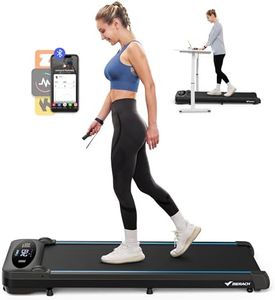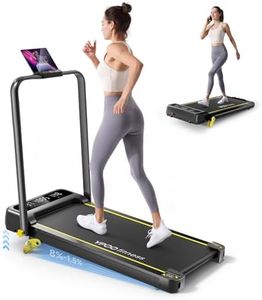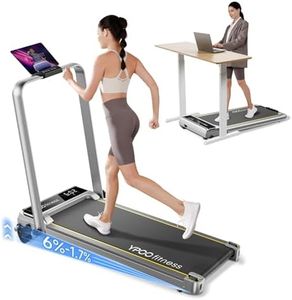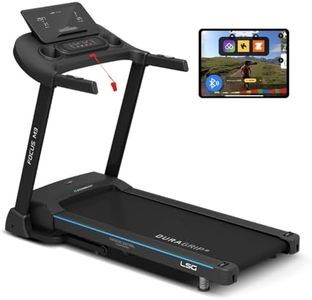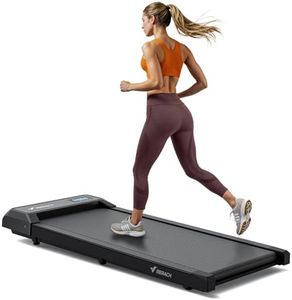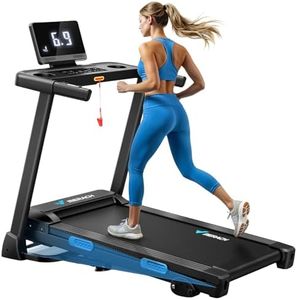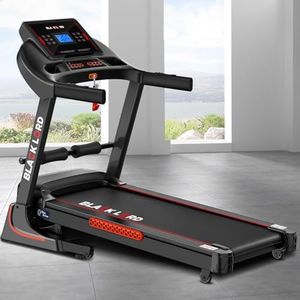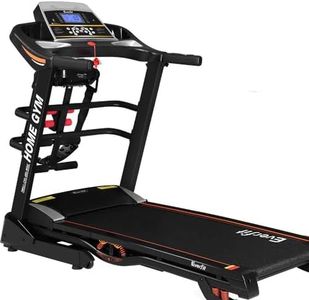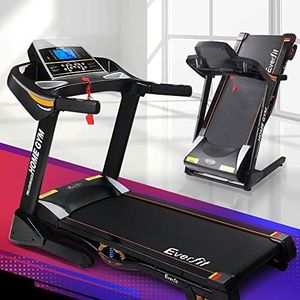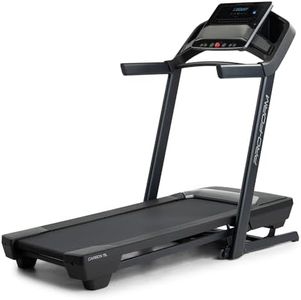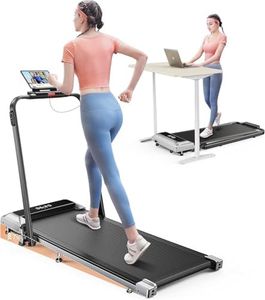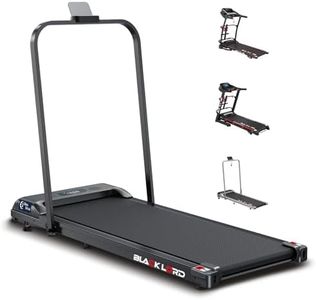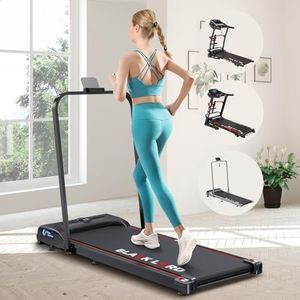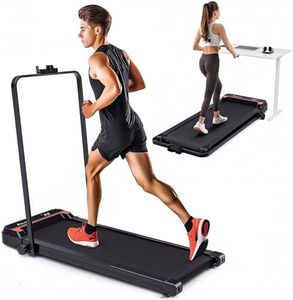We Use CookiesWe use cookies to enhance the security, performance,
functionality and for analytical and promotional activities. By continuing to browse this site you
are agreeing to our privacy policy
10 Best Foldable Treadmills
From leading brands and best sellers available on the web.By clicking on a link to a third party's website, log data is shared with that third party.
Buying Guide for the Best Foldable Treadmills
Choosing the right foldable treadmill can be a rewarding process when you know what to look for. Start by identifying your intended use: will you be walking, jogging, or running? Think about how much space you have for set-up and storage, and consider how often and intensively you plan to use the machine. Understanding your own fitness goals and lifestyle will help you focus on the features that truly matter for you.Motor Power (Horsepower/HP)The motor power of a foldable treadmill affects its performance and lifespan, especially under heavier use. It’s usually measured in continuous horsepower (CHP). Lower values (under 2.0 CHP) are suitable for walking or infrequent, light use. Middle values (2.0–2.5 CHP) fit regular jogging or mixed walking and running. Higher values (above 2.5 CHP) are best for serious runners or multiple users. To choose, consider your main activity: walkers can use lower-powered motors, while frequent runners need a stronger motor for durability and smoothness.
Running Surface (Belt Size)The running surface, or belt size, determines how comfortable and safe your workout feels. Shorter and narrower belts are fine for walking or users with smaller strides. If you plan to run or have a longer stride, you’ll want a longer and wider deck for safety and comfort. Standard walking decks are usually around 16 x 50 inches, while running decks are 18–20 inches wide and at least 55 inches long. Measure your stride and think about your activities to pick a suitable size.
Foldability MechanismFoldability refers to how the treadmill folds for storage and how easy and safe it is to fold and unfold. Manual folding types require some lifting and might not be suitable for everyone, while automatic or hydraulic fold systems are easier and safer, especially for frequent users or those with limited strength. Consider your ability to lift and whether you’ll be folding the treadmill often to select the right mechanism.
Maximum User WeightMaximum user weight tells you how much load the treadmill can safely handle. This is crucial for durability and safe operation. Treadmills with a higher weight limit are sturdier, while lower limits may wear out faster if pushed to their max. Always choose a machine with a limit comfortably above your current weight, allowing for users of different sizes and future changes.
Cushioning SystemCushioning systems help absorb shock, reducing impact on your joints during exercise. Treadmills with better shock absorption are ideal if you have sensitive knees, are prone to injuries, or plan longer sessions. Some basic models may have minimal cushioning, while mid- or top-tier treadmills offer advanced shock-absorbing designs. Reflect on your joint health and comfort preference to decide what level of cushioning you need.
Speed and Incline RangeSpeed and incline settings define the types of workouts you can do. Walkers need basic speed and flat incline, while joggers and runners may want higher speed and steeper incline options for more variety and challenge. Beginners can start with low-to-medium ranges, while experienced users benefit from higher limits for interval workouts or hill training. Think about your fitness level and training goals to prioritize these features.
Display Console and ProgramsThe display console provides workout feedback (like speed, time, distance, calories) and may include built-in workout programs. More advanced consoles can offer more data and entertainment options, while basic ones keep things simple. Ask yourself if you prefer quick-start and manual control or guided workouts and detailed tracking to decide on the type of display and programs you need.
Portability FeaturesPortability means how easy you can move the treadmill, often supported by transport wheels or lightweight design. This matters if your treadmill will be moved for storage or cleaning. Some treadmills also have handles for easy lifting. If you plan to shift the treadmill often, ensure it’s light enough and has smooth-rolling wheels.
